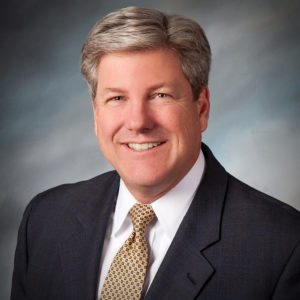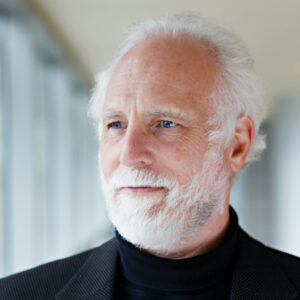Originally published in Think Advisor, November 29, 2016
The election of Donald Trump means that finance will get a new wave of deregulation that will (almost certainly) sweep away the DOL fiduciary rule. The watchword for RIAs in this new world: re-differentiation. But let’s first review how we got to this new world.
First, An Historic October for Fiduciaries
October was historic for brokers and advice. As many as 49,200 brokers from five BDs “automatically” became fiduciaries to retirement investors effective next year. Brokers from Morgan Stanley (16,000), Ameriprise (2,700), LPL (14,000), Raymond James (3,500), and Edward Jones (13,000) will offer retirement advice in brokerage accounts under the DOL rule BICE starting in April, according to firm announcements. (This is the start; more firms are certain to follow.)
In contrast, Merrill Lynch and Commonwealth Financial announced they would drop or limit the availability of brokerage accounts in retirement advice to comply with the DOL rule. Merrill revved up its marketing with full-page newspaper ads headlined, “We’re committed to your best interest. Not the status quo.” Merrill explains, “It means when you sit at the table with your Merrill Lynch advisor or invest with us online, you can be sure you are getting guidance [emphasis added] that is in your best interest …. We believe we are honoring the spirit of the new rules – not looking for ways to get around them.”
The challenge for fiduciaries is daunting. Tens of thousands of new fiduciary brokers will soon fly the fiduciary flag, as Merrill tells the country that the thundering herd will give all its customers – retirement and nonretirement accounts alike – ‘best interest’ treatment. The implications of these developments have barely been discussed in the advisory industry.
Tens of thousands of new fiduciary brokers will soon fly the fiduciary flag, as Merrill tells the country that the thundering herd will give all its customers – retirement and nonretirement accounts alike – ‘best interest’ treatment.
One exception. Schwab CEO Walt Bettinger took the bull by the horns at its 2016 IMPACT conference (in October). His message: fiduciaries must differentiate what they do. The great challenge is “To re-differentiate ourselves” from those “Wanting to look and act and to appear” to be like us. Merrill’s branding serves as a keen reminder of the relevance of Bettinger’s message.
Second, an Historic November for Fiduciaries
The November presidential election has clear consequences for the DOL rule. “Historic” October was then overshadowed by the election. Advisors to the president-elect openly say they wish to repeal the rule. Though a rule repeal is neither quick nor easy, a number of possible tactics can be applied to postpone, undermine or eventually repeal the rule. The DOL rule is now on life support.
Meanwhile, BDs are preparing for the DOL rule. New platforms, policies and procedures are under construction in c-suites around the country. Some are transforming the fee-based best interest world. Others will keep commissions. These changes are significant and costly. The central question is how firms will implement these policies absent the DOL rule. The answer is unclear. There is no certainty as to implementation.
There is, however, much “certainty” that, irrespective regulations, firms will communicate their fidelity to customers’ best interests. Merrill has already started. Minor edits to its current communications on the DOL rule will suffice to meet its branding objectives in a world without the DOL rule.
Third, a New Era of More Subtle Confusion
For 20 years fiduciary advisors, regulators and researchers have documented, discussed and bemoaned how investors don’t understand that brokerage sales and product recommendations differ from fiduciary advice. From this perspective, confusion has defined the fiduciary discussion. Is it possible investor confusion could get worse?
With the elimination or dilution of the DOL rule and BICE (and deregulatory winds preventing SEC fiduciary rulemaking), industry voices will reach further. Some voices will be responsible. However, other influential voices will simply suggest fidelity to stringent standards, but lack sufficient policies and procedures to truly implement them. SIFMA and FINRA will communicate their concept of ‘best interest.’ Yet prior writings suggest their idea of ‘best interest’ simply does not comport with common law or trust law standards.
Schwab’s Bettinger frames the challenge for fiduciary advisors – “re-differentiating” from those who “appear” to be fiduciaries – with lessons in mind. One such lesson is that advisors need to better counter clever ads with credible actions. This is a lesson that United Capital boss Joe Duran says the finance industry should take from the election. That is: the system is “broken” and the industry is “tone deaf” to criticisms and “American voters have said it’s time their interests come first.”
This lesson drives the Institute for the Fiduciary Standard’s Best Practices, which are crafted to raise standards and understanding of what fiduciaries do. The Best Practices affirmation program lets advisors show investors how fiduciary conduct differs from brokerage sales practices. Industry research suggests that the impact of following these practices can be more than clarifying what advice means. It suggests these practices can increase client trust and enhance advisor /client relationships.
“Re-differentiation” should be the ‘best practice’ of any advisor in the DOL/post-DOL fiduciary world that lies ahead.

